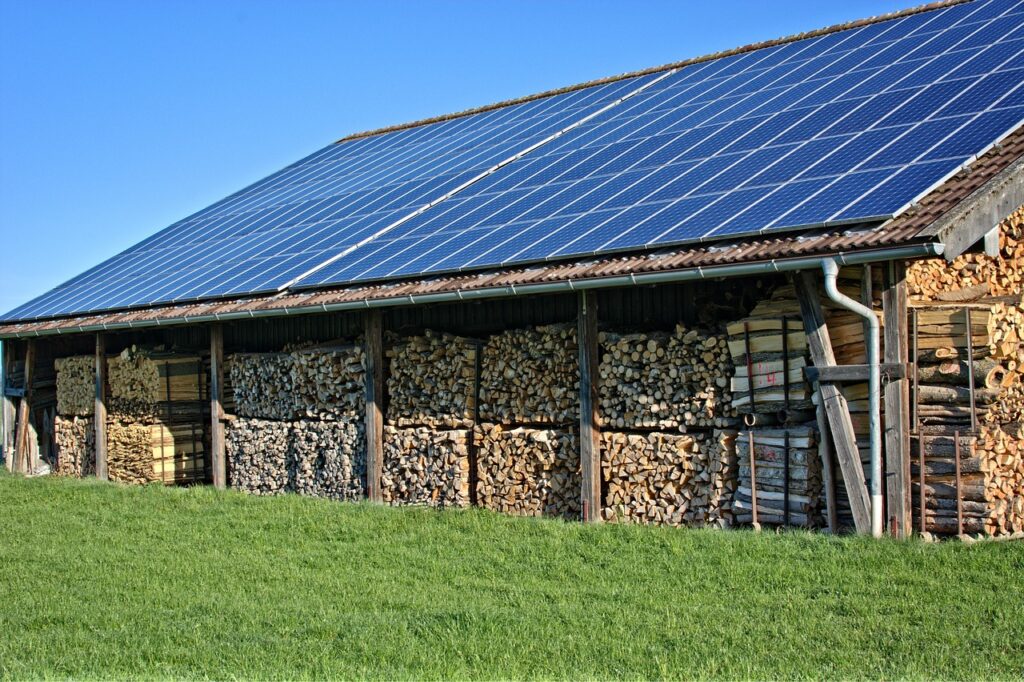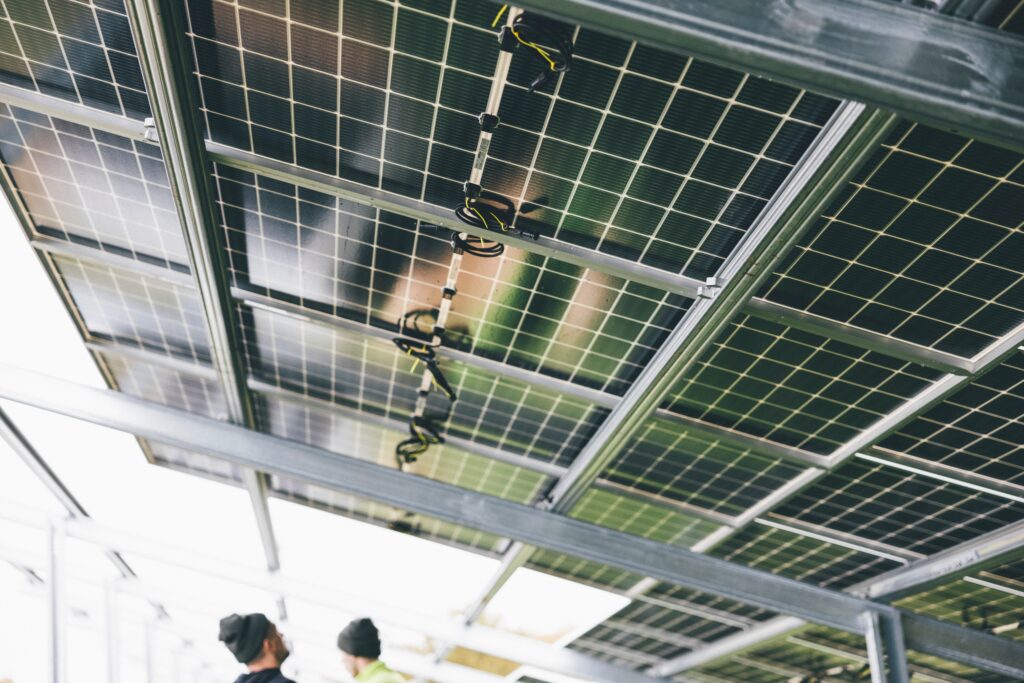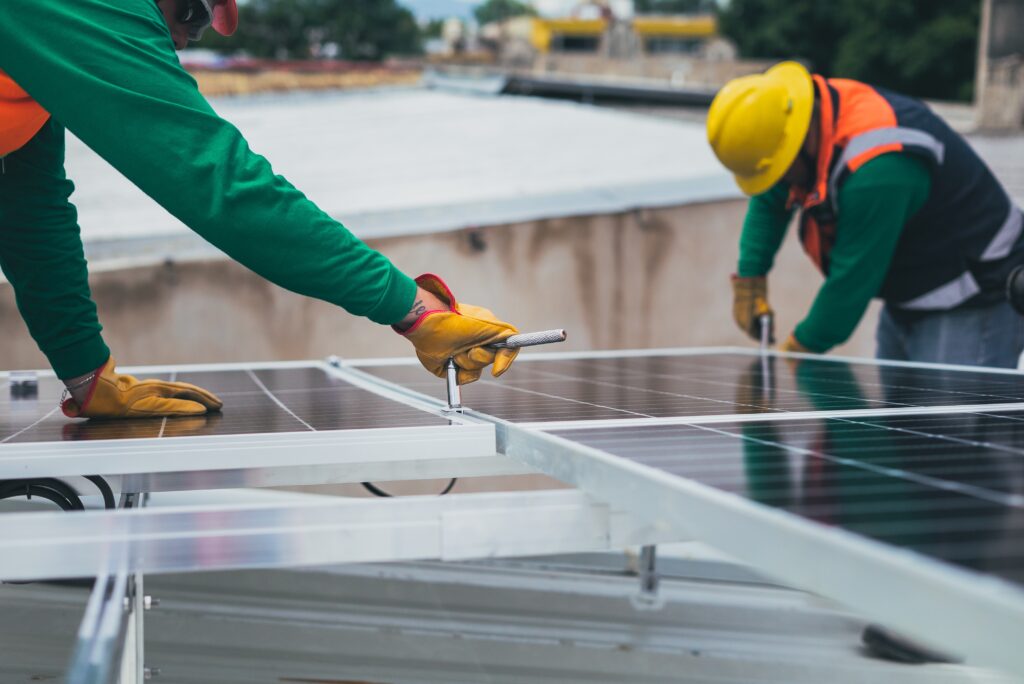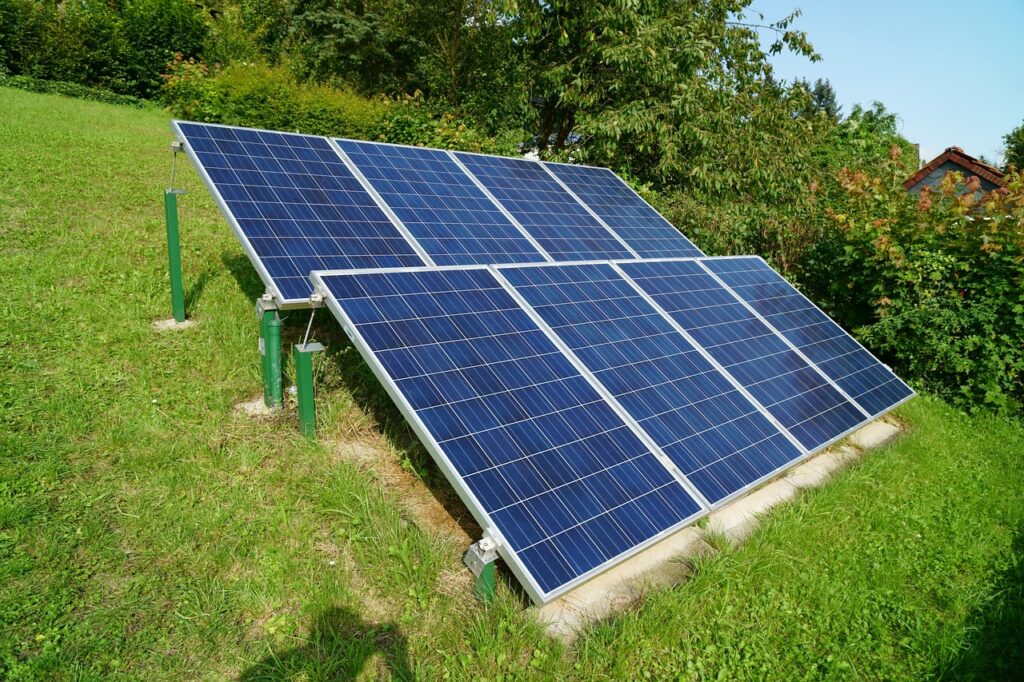An Overview Of Unlimited Off-Grid Solar Energy!
Table of Contents
- Off-grid living and the need for a reliable solar setup
- The benefits of using solar energy
- How solar power can reduce your stress
Understanding Off-Grid Solar Systems
- Components of an off-grid solar system
- The importance of sizing your system
- The different types of batteries for solar energy storage
Choosing the Right Solar Panels
- Factors to consider when choosing solar panels
- Monocrystalline vs. Polycrystalline
- Thin-Film vs. Crystalline
Inverters and Charge Controllers
- The role of inverters and charge controllers in a solar system
- The different types of inverters
- The importance of a charge controller
- Different types of batteries for solar systems
- Pros and cons of each type of battery
- Calculating battery capacity needs
- Sizing your system based on your energy needs
- Understanding your energy consumption patterns
- Factors that can affect your solar system design
- Routine maintenance for solar systems
- Troubleshooting common problems
- Extending the life of your solar system
The Pros and Cons of off grid solar
- Pros and cons list
- Common questions and answers about solar energy for off-grid living

Introduction
Off-grid living has become increasingly popular as people seek to live a more sustainable and self-sufficient lifestyle. Living off-grid means being responsible for generating your own power, which can be a daunting task. However, by investing in a reliable solar setup, you can have a sustainable source of energy that reduces your stress and provides peace of mind.
Solar energy has become the preferred choice for many off-grid homeowners due to its reliability and affordability. It is a renewable energy source that utilizes the power of the sun to generate electricity, making it a sustainable and eco-friendly choice. In this article, we will explore the different components of an off-grid solar system, how to choose the right solar panels, the importance of inverters and charge controllers, the different types of batteries, designing and installing your solar system, and how to maintain it.
Off grid solar versus grid tied solar: What’s the difference?
When considering a solar system for your home or cabin, you have two main options: off-grid or grid-tied. Each type of system has its own advantages and disadvantages, and the decision ultimately comes down to your personal preferences and energy consumption needs.
Off-Grid Solar Systems
Off-grid solar systems are completely independent from the electrical grid. They are designed to meet all of your electricity needs, even when the sun isn’t shining. These systems require a larger initial investment and more maintenance than grid-tied systems, but they offer greater independence and the peace of mind that comes with having a self-sufficient energy source.
Advantages:
- Independence: Off-grid solar systems provide complete independence from the electrical grid, which means you won’t experience any power outages or rely on the grid for electricity.
- Eco-friendly: Off-grid solar systems rely solely on solar energy, which is a clean and renewable source of energy. By choosing an off-grid solar system, you’re reducing your carbon footprint and contributing to a healthier planet.
- Reduced energy bills: Since off-grid solar systems generate their own electricity, you won’t have to pay for electricity from the grid. This means you’ll have lower energy bills and can potentially save money in the long run.
Disadvantages:
- Higher upfront costs: Off-grid solar systems require a larger initial investment than grid-tied systems, as you’ll need to purchase all of the components required to generate and store your own electricity.
- Maintenance: Off-grid solar systems require more maintenance than grid-tied systems. You’ll need to regularly monitor and maintain your batteries and inverter to ensure your system is running efficiently.
- Limited power supply: Off-grid solar systems have a limited power supply, which means you’ll need to carefully manage your energy consumption to avoid running out of power. This may require changes in your daily routine or lifestyle.
Grid-Tied Solar Systems
Grid-tied solar systems are connected to the electrical grid and work in tandem with your utility company. These systems are designed to supplement your electricity consumption, not replace it entirely. Grid-tied systems require less maintenance and have a lower upfront cost than off-grid systems, but they offer less independence and are subject to power outages and electricity rate increases.
Advantages:
- Lower upfront costs: Grid-tied solar systems have a lower upfront cost than off-grid systems, as you won’t need to purchase as many components to generate and store your own electricity.
- Utility company backup: Grid-tied solar systems are connected to the electrical grid, which means you’ll have access to electricity from your utility company in the event that your solar panels aren’t generating enough energy.
- No energy storage required: Since grid-tied solar systems are connected to the grid, you won’t need to purchase batteries to store excess energy. This can save you money on upfront costs.
Disadvantages:
- Less independence: Grid-tied solar systems are still connected to the electrical grid, which means you’re not completely independent from the grid. You’ll still experience power outages and be subject to electricity rate increases from your utility company.
- Limited eco-friendliness: Grid-tied solar systems still rely on electricity from the grid, which may be generated from non-renewable sources of energy. This means you’re not contributing as much to a healthier planet as you would be with an off-grid solar system.
- No power during outages: Grid-tied solar systems don’t provide power during power outages. This means you’ll need to rely on electricity from your utility company or a backup generator to power your home or cabin during an outage.
Overall
the decision between an off-grid or grid-tied solar system comes down to your individual energy needs, budget, and level of independence you desire. If you live in a remote location or want to be completely self-sufficient, an off-grid solar system might be the better choice. On the other hand, if you live in an urban or suburban area and want to reduce your energy costs while still having access to electricity from your utility company, a grid-tied system might be the better option.
One thing to keep in mind is that there is a middle ground between these two types of solar systems: a hybrid solar system. Hybrid solar systems combine the best of both off-grid and grid-tied systems by providing energy independence while still having a connection to the grid for backup power during outages. These systems are becoming more popular as people look for ways to reduce their reliance on the electrical grid while still having access to backup power when needed.
Understanding Off-Grid Solar Systems
An off-grid solar system is a self-sufficient energy system that is not connected to the utility grid. It is designed to generate, store, and distribute power to your home or cabin. The key components of an off-grid solar system include solar panels, batteries, charge controllers, inverters, and a backup generator.
Components of an Off-Grid Solar System
- Solar panels: capture and convert sunlight into electricity
- Batteries: store the energy generated by the solar panels
- Charge controllers: regulate the amount of charge going into the batteries
- Inverters: convert the DC power from the batteries into AC power for household use
- Backup generator: provides power during periods of low sunlight or high energy demand
The Importance of Sizing Your System
Sizing your solar system is a critical step to ensure that you have enough power to meet your energy needs. Factors that affect the size of your solar system include your energy consumption patterns, location, available sunlight, and the size of your home or cabin. A system that is too small will not be able to meet your energy demands, while a system that is too large can be costly and inefficient
The Different Types of Batteries for Solar Energy Storage
There are several types of batteries available for storing solar energy. These include lead-acid, lithium-ion, and saltwater batteries. Each type has its pros and cons, and the choice largely depends on the needs of the homeowner. Lead-acid batteries are the most common type and are affordable, but they have a shorter lifespan and require regular maintenance. Lithium-ion batteries, on the other hand, are more expensive but have a longer lifespan and require less maintenance. Saltwater batteries are a newer technology that is still in development but promises to be a more eco-friendly and cost-effective option.
Choosing the Right Solar Panels

Solar panels are the most critical component of an off-grid solar system. They are responsible for capturing sunlight and converting it into electricity. When choosing solar panels, several factors need to be considered, including the type of panel, efficiency, and power output.
Factors to Consider When Choosing Solar Panels
The location of your home or cabin, the amount of sunlight available, and your energy consumption needs will determine the size and number of solar panels required. Other factors to consider include the cost of the panels, their efficiency, and the quality of the manufacturer.
Monocrystalline vs. Polycrystalline
Monocrystalline and polycrystalline solar panels are the two most common types of solar panels. The first type, Monocrystalline panels, are more efficient and have a longer lifespan but are more expensive. The second type, Polycrystalline panels, are cheaper but less efficient and have a shorter lifespan.
Thin-Film vs. Crystalline
Thin-film solar panels are a newer technology that is less efficient but more flexible and lightweight than crystalline panels. Crystalline panels are more efficient but heavier and less flexible.
Inverters and Charge Controllers
Inverters and charge controllers are essential components of an off-grid solar system. They work together to regulate the amount of power going into the batteries and convert DC power from the batteries into AC power for household use.
The Role of Inverters and Charge Controllers in a Solar System
Inverters and charge controllers work together to ensure that the batteries are charged and discharged correctly. Charge controllers regulate the amount of charge going into the batteries to prevent overcharging, while inverters convert DC power from the batteries into AC power for household use.
The Different Types of Inverters
There are two types of inverters: pure sine wave and modified sine wave. Pure sine wave inverters are more efficient and provide a cleaner, more stable output. Modified sine wave inverters are cheaper but can damage sensitive electronics and appliances.
The Importance of a Charge Controller
Charge controllers are critical components of a solar system as they prevent overcharging and extend the lifespan of the batteries. They regulate the amount of charge going into the batteries and prevent them from discharging too much.
Battery Banks
Battery banks store the energy generated by the solar panels for use when the sun is not shining. Choosing the right type of battery is essential for the efficiency and longevity of your solar system.
Different Types of Batteries for Solar Systems
There are three main types of batteries used in solar systems: lead-acid, lithium-ion, and saltwater batteries. Lead-acid batteries are the most common and affordable but have a shorter lifespan and require regular maintenance. Lithium-ion batteries are more expensive but have a longer lifespan and require less maintenance. Saltwater batteries are a newer technology that promises to be more eco-friendly and cost-effective.
Pros and Cons of Each Type of Battery
Lead-acid batteries are affordable but require regular maintenance and have a shorter lifespan. Lithium-ion batteries are more expensive but have a longer lifespan and require less maintenance. Saltwater batteries are a newer technology that is still in development but promises to be a more eco-friendly and cost-effective option.
Sizing Your Battery Bank
The size of your battery bank will depend on your energy consumption needs and the amount of sunlight available in your location. A larger battery bank will allow you to store more energy, but it will also be more expensive.
Designing Your Solar System
Designing an off-grid solar system can be a complex process that requires careful planning and consideration. Several factors need to be taken into account, including energy consumption needs, the location of your home or cabin, and the amount of sunlight available.
Steps to Designing a Solar System
The first step in designing a solar system is to determine your energy consumption needs. This will help you determine the size of the solar panels and battery bank required. You will also need to consider the location of your home or cabin, the amount of sunlight available, and the type of solar panels and batteries to use.
Consult with a Professional

Designing an off-grid solar system can be a complex process, and it is recommended that you consult with a professional solar installer. A professional can help you determine your energy consumption needs, design a solar system that meets those needs, and ensure that the system is installed correctly.
One professional installer is making a bang in the Arkansas / Oklahoma solar market called That Off Grid Guy.
Maintaining Your Solar System
Proper maintenance and troubleshooting are essential to the longevity and efficiency of your off-grid solar system. Regular maintenance can help prevent issues before they arise, while troubleshooting can help you identify and fix problems quickly.
Maintenance
Regular maintenance of your solar system includes checking the battery bank, solar panels, and charge controllers for damage or wear. It also involves cleaning the solar panels and ensuring that they are free of debris.
Troubleshooting
If you experience issues with your solar system, troubleshooting can help you identify and fix the problem quickly. Common issues include battery failure, inverter failure, and wiring issues.
The Pros and Cons of off grid solar
Here’s a list of some of the pros and cons of off-grid solar power:
Pros:
- Energy independence: With an off-grid solar system, you don’t have to rely on the electrical grid for your energy needs. This can be especially beneficial if you live in a remote location or if you want to reduce your reliance on utility companies.
- Cost savings: Over time, an off-grid solar system can save you money on energy costs since you’re not paying for electricity from a utility company.
- Environmentally friendly: Solar power is a clean and renewable energy source, which can help reduce your carbon footprint and contribute to a cleaner environment.
- Reliability: Off-grid solar systems can be designed to provide reliable power even in areas with frequent power outages or other disruptions to the electrical grid.
- Flexibility: Off-grid solar systems can be designed to fit a variety of energy consumption needs, from small cabins to larger homes or businesses.
Cons:
- Upfront cost: The initial cost of installing an off-grid solar system can be expensive, which can be a barrier for some people.
- Maintenance: Off-grid solar systems require regular maintenance, such as cleaning and checking for damage to the panels.
- Battery storage: To use power at night or during cloudy days, an off-grid solar system requires battery storage. Batteries can be expensive and require regular maintenance.
- Limited energy supply: Depending on the size of your solar system, there may be times when you don’t generate enough energy to meet your needs. This can be especially true during the winter months or during periods of low sunlight.
- Technical expertise: Designing and installing your own system requires technical expertise, which can be difficult for some people to manage on their own.
Final Thoughts
An off-grid solar system can offer a reliable and eco-friendly way to power your home or cabin. By choosing the right components and designing your system to meet your energy consumption needs, you can enjoy the benefits of solar power without relying on the grid. With proper maintenance and troubleshooting, you can ensure that your system runs smoothly and efficiently for years to come.
FAQ
Q: How long do solar panels last?
A: Solar panels can last up to 25 years or more with proper maintenance.
Q: Can I install an off-grid solar system myself?
A: While it is possible to install an off-grid solar system yourself, it is recommended that you consult with a professional solar installer to ensure that the system is designed and installed correctly.
Q: Can an off-grid solar system power my entire home?
A: An off-grid solar system can power your entire home, but it will depend on your energy consumption needs and the size of the solar panels and battery bank.
Q: Are off-grid solar systems expensive?
A: Off-grid solar systems can be more expensive than traditional grid-tied systems, but they offer long-term cost savings and can be more environmentally friendly.
Disclaimer
The information contained in this article is for general information purposes only. The author makes no representations or warranties of any kind, express or implied, about the completeness, accuracy, reliability, suitability, or availability with respect to the article or the information, products, services, or related graphics contained in the article for any purpose. Any reliance you place on such information is therefore strictly at your own risk.
References
- “Types of Solar Panels.” EnergySage, 11 Feb. 2021, www.energysage.com/solar/101/types-of-solar-panels/.
- “Off-Grid Solar Systems.” Wholesale Solar, www.wholesalesolar.com/off-grid-solar-systems.
- “Solar Power 101: Batteries.” Solar Power World, 10 Aug. 2020, www.solarpowerworldonline.com/2020/08/solar-power-101-batteries/.
- “Inverter Buying Guide.” NorthernArizona Wind and Sun, www.solar-electric.com/learning-center/inverter-buying-guide.html.
- “Off-Grid Solar Power Systems.” AltE, www.altestore.com/howto/off_grid_solar_power_systems/.
- “Solar Panel Lifespan: How Long Do They Really Last?” Solar Power World, 18 Mar. 2021, www.solarpowerworldonline.com/2021/03/solar-panel-lifespan-how-long-do-they-really-last/.
- “Solar Batteries: Deep Cycle Vs. Lithium-Ion.” EnergySage, 18 May 2020, www.energysage.com/solar/solar-energy-storage/deep-cycle-batteries-vs-lithium-ion/.
- “Saltwater Batteries: A New Energy Storage Solution?” EnergySage, 28 Sept. 2020, www.energysage.com/solar/solar-energy-storage/saltwater-batteries/.

